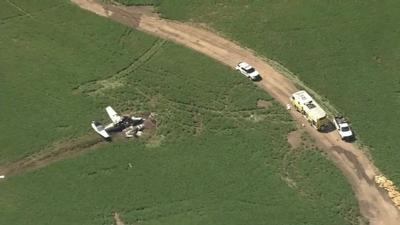Pilot Perishes in Missouri Mishap
The NTSB has released its preliminary report on a 20 July 2023 accident in which a Piper PA-31P Pressurized Navajo, registration N200RA, was damaged beyond repair and its pilot/sole-occupant killed shortly after departing Missouri’s Mosby-Midwest National Air Center Airport (GPH).

The aircraft, according to FAA documents, was being ferried to Kansas’s Kingman Airport/Clyde Cessna Field (9K8), and was operated as a private flight under Part 91 of the Federal Aviation Regulations.
According to multiple witnesses, the aircraft’s owner and a hired mechanic had worked on the accident-aircraft over a span of six-months prior to the accident flight. The Navajo’s most recent annual inspection had been completed in 2015.
Two witnesses reported that during an engine ground run conducted some two weeks prior to the accident-flight, the aircraft’s right engine proved difficult to start and failed to produce full power. The witnesses stated, also, that the Navajo’s inboard fuel tanks leaked fuel “horribly” anytime the aircraft was fueled.
At or about the time of the aforementioned ground run, the accident-aircraft’s owner received a Special Airworthiness Certificate: Special Flight Permit, to ferry the Navajo from Mosby, Missouri, to Kingman, Kansas, to complete a compulsory annual inspection. Witnesses reported the owner solicited three pilots to undertake the ferry flight—all of whom declined.
Prior to the accident-flight, the Navajo’s owner ordered the aircraft fueled. An unknown amount of the 18.53-gallons of AVGAS pumped into the accident-aircraft reportedly leaked from its right-wing inboard fuel-tank. According to the mechanic who’d worked on the aircraft, the Navajo, prior to the accident-flight, was carrying 140-gallons of fuel divided between its two fifty-gallon inboard wing fuel-tanks and its right-wing auxiliary fuel-tank, which contained forty-gallons.
Multiple cell-phone video recordings of the takeoff sequence showed the accident-aircraft veer right and attempt to rotate before settling back to GPH Runway 36. The recordings chronicled the Navajo becoming airborne near the runway’s terminus and yawing right before climbing parallel with rising terrain.
Witnesses observed the accident-aircraft barely clear a line of trees beyond the end of the departure runway and make a left turn before disappearing from sight behind a stand of trees.

A witness some 1.6-nautical miles north of the airport stated he heard loud aircraft engine sounds before observing the accident-aircraft appear from behind a copse of trees headed in the direction of his residence. The witness reported the aircraft struck a power transmission line before impacting the canopy of a large tree in his front yard. The accident-aircraft continued in a left bank toward a nearby soybean field, impacting terrain in a nose-low, left-banked attitude. The Navajo reportedly slid several-hundred feet. A post-impact fire ensued.
The accident-aircraft’s wreckage came to rest in a relatively flat agricultural field approximately 1.6-nautical-miles north of the departure end of GPH Runway 36. The wires struck by the Navajo were strung some 25-feet above the ground and located 735-feet prior to the aircraft’s wreckage. The accident-aircraft struck the tree canopy—which lay some 150-feet beyond the transmission wires—at an altitude of approximately sixty-feet AGL. The debris-path extended 313-feet into the field on a magnetic-course of 254-degrees to the main wreckage.
In accordance with CFR Part 830, the accident-aircraft’s wreckage was retained for further examination.
 Bolen Gives Congress a Rare Thumbs-Up
Bolen Gives Congress a Rare Thumbs-Up The SportPlane Resource Guide RETURNS!!!!
The SportPlane Resource Guide RETURNS!!!! Buying Sprees Continue: Textron eAviation Takes On Amazilia Aerospace
Buying Sprees Continue: Textron eAviation Takes On Amazilia Aerospace Hawker 4000 Bizjets Gain Nav System, Data Link STC
Hawker 4000 Bizjets Gain Nav System, Data Link STC Echodyne Gets BVLOS Waiver for AiRanger Aircraft
Echodyne Gets BVLOS Waiver for AiRanger Aircraft




